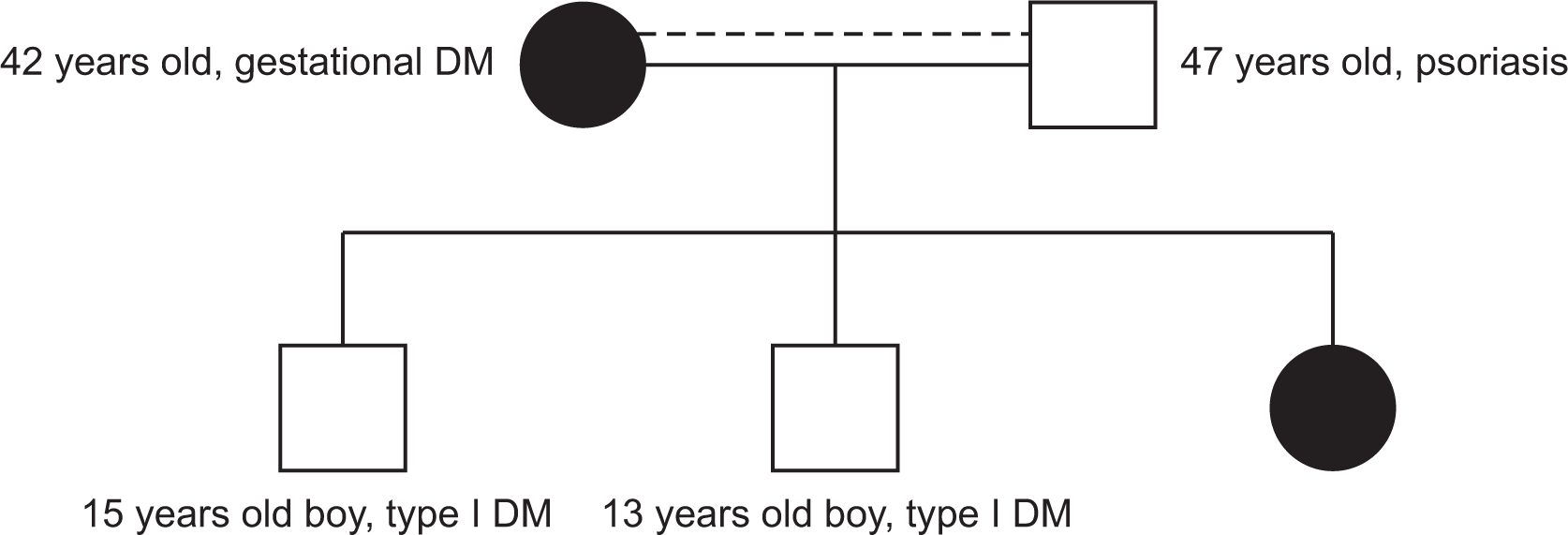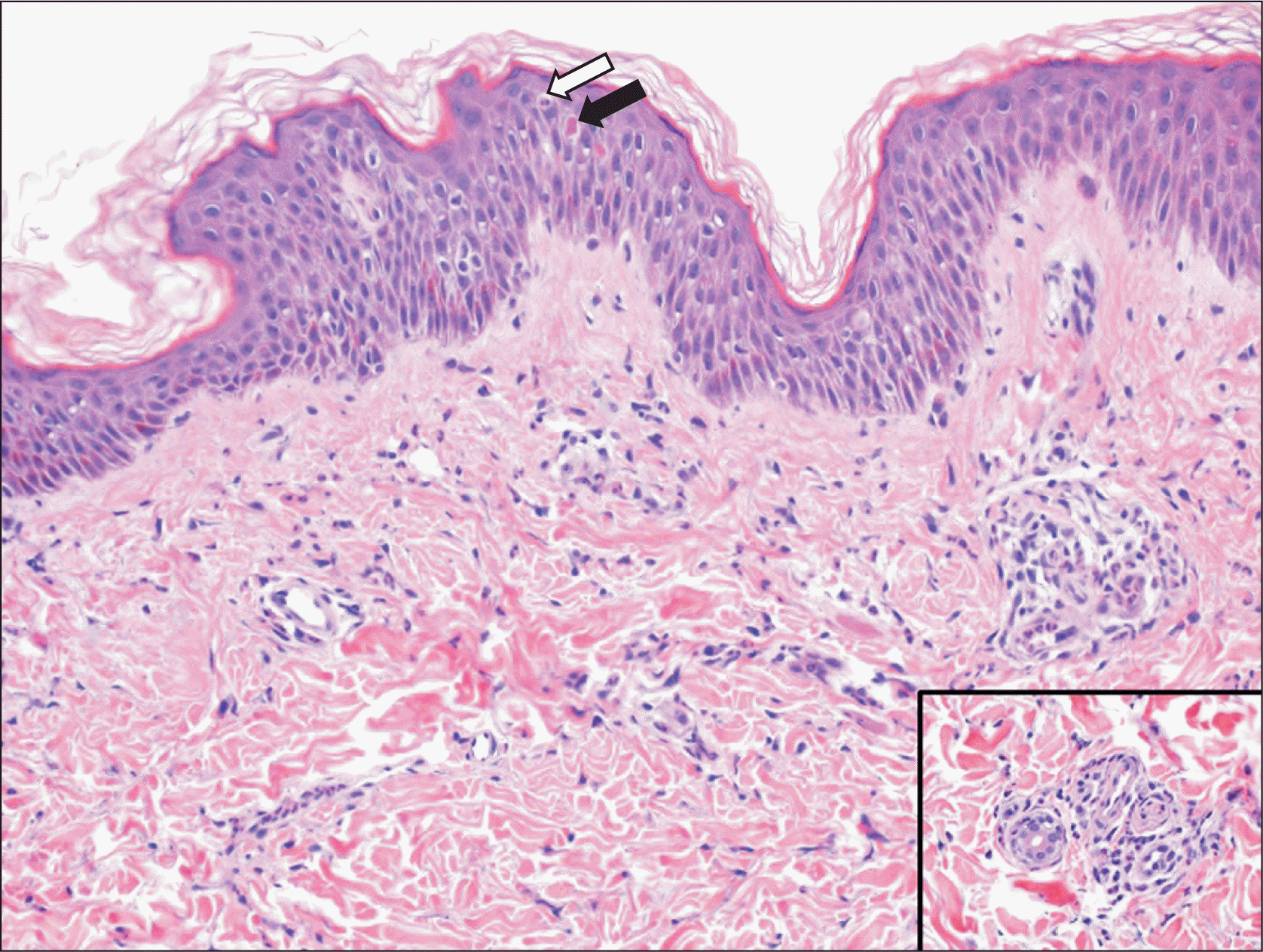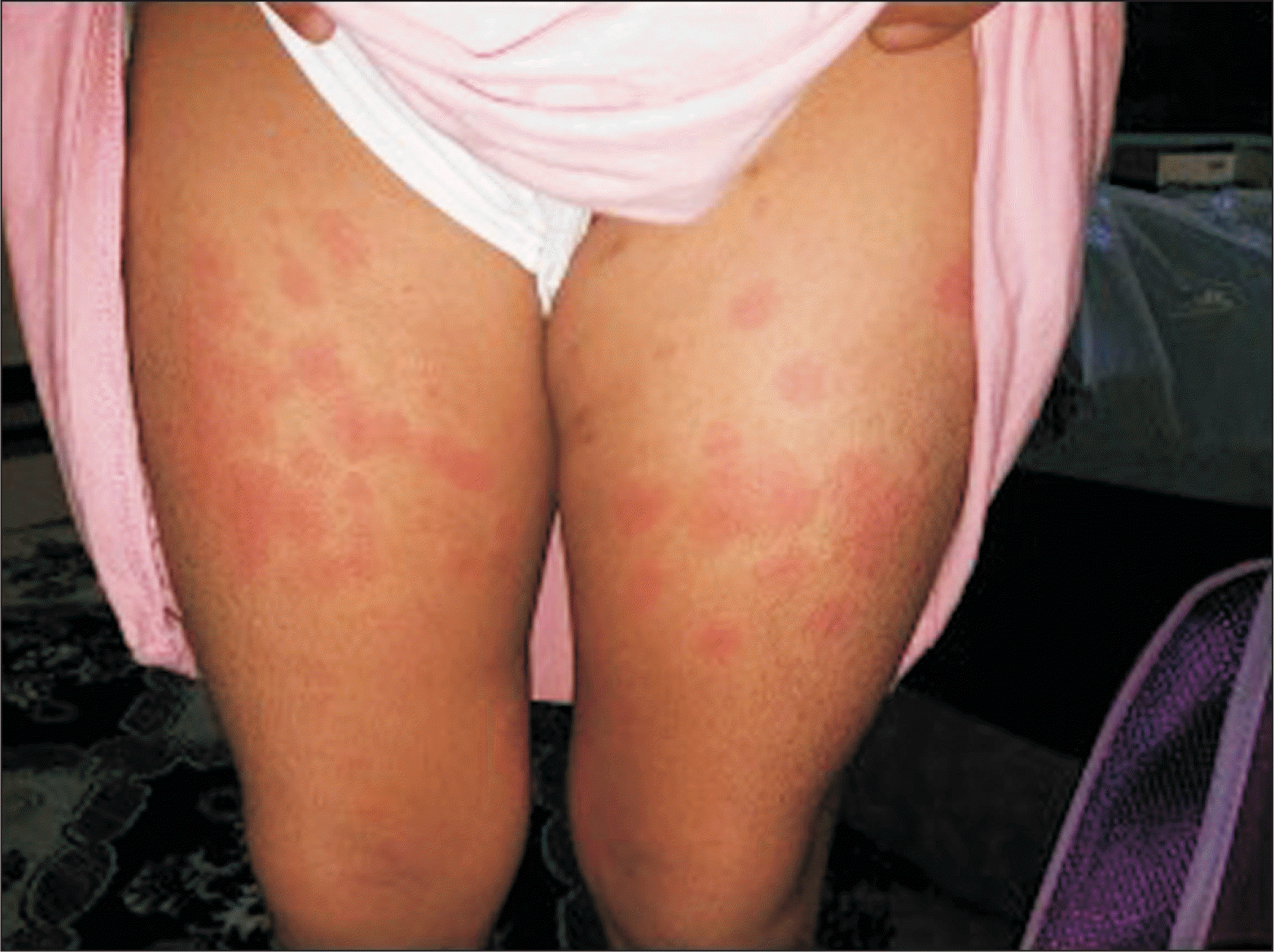1. Chouk H, Ben Rejeb M, Boussofara L, Elmabrouk H, Ghariani N, Sriha B, et al. 2021; Phenotypic intrafamilial variability including H syndrome and Rosai-Dorfman disease associated with the same c.1088G > A mutation in the SLC29A3 gene. Hum Genomics. 15:63. DOI:
10.1186/s40246-021-00362-z. PMID:
34657628. PMCID:
PMC8522101.
2. Molho-Pessach V, Ramot Y, Camille F, Doviner V, Babay S, Luis SJ, et al. 2014; H syndrome: the first 79 patients. J Am Acad Dermatol. 70:80–8. DOI:
10.1016/j.jaad.2013.09.019. PMID:
24172204.

3. Morgan NV, Morris MR, Cangul H, Gleeson D, Straatman-Iwanowska A, Davies N, et al. 2010; Mutations in SLC29A3, encoding an equilibrative nucleoside transporter ENT3, cause a familial histiocytosis syndrome (Faisalabad histiocytosis) and familial Rosai-Dorfman disease. PLoS Genet. 6:e1000833. DOI:
10.1371/journal.pgen.1000833. PMID:
20140240. PMCID:
PMC2816679.

4. Jaouadi H, Zaouak A, Sellami K, Messaoud O, Chargui M, Hammami H, et al. 2018; H syndrome: clinical, histological and genetic investigation in Tunisian patients. J Dermatol. 45:978–85. DOI:
10.1111/1346-8138.14359. PMID:
29808591.

5. Bloom JL, Lin C, Imundo L, Guthery S, Stepenaskie S, Galambos C, et al. 2017; H syndrome: 5 new cases from the United States with novel features and responses to therapy. Pediatr Rheumatol Online J. 15:76. DOI:
10.1186/s12969-017-0204-y. PMID:
29041934. PMCID:
PMC5645937.

6. Nofal H, AlAkad R, Nofal A, Rabie E, Chaikul T, Chiu FP, et al. 2021; H syndrome: a review of treatment options and a hypothesis of phenotypic variability. Dermatol Ther. 34:e15082. DOI:
10.1111/dth.15082. PMID:
34351669.
7. David O, Geylis M, Kristal E, Ling G, Schreiber R. 2021; Glomerular involvement in children with H syndrome. Pediatr Nephrol. 36:721–4. DOI:
10.1007/s00467-020-04860-5. PMID:
33387019.

8. Melki I, Lambot K, Jonard L, Couloigner V, Quartier P, Neven B, et al. 2013; Mutation in the SLC29A3 gene: a new cause of a monogenic, autoinflammatory condition. Pediatrics. 131:e1308–13. DOI:
10.1542/peds.2012-2255. PMID:
23530176.
9. Çağdaş D, Sürücü N, Tan Ç, Kayaoğlu B, Özgül RK, Akkaya-Ulum YZ, et al. 2020; Autoinflammation in addition to combined immunodeficiency: SLC29A3 gene defect. Mol Immunol. 121:28–37. DOI:
10.1016/j.molimm.2020.02.014. PMID:
32151906.

10. Spiegel R, Cliffe ST, Buckley MF, Crow YJ, Urquhart J, Horovitz Y, et al. 2010; Expanding the clinical spectrum of SLC29A3 gene defects. Eur J Med Genet. 53:309–13. DOI:
10.1016/j.ejmg.2010.06.012. PMID:
20619369.

11. de Jesus J, Imane Z, Senée V, Romero S, Guillausseau PJ, Balafrej A, et al. 2013; SLC29A3 mutation in a patient with syndromic diabetes with features of pigmented hypertrichotic dermatosis with insulin-dependent diabetes, H syndrome and Faisalabad histiocytosis. Diabetes Metab. 39:281–5. DOI:
10.1016/j.diabet.2013.03.007. PMID:
23623699.

12. Petty RE, Southwood TR, Manners P, Baum J, Glass DN, Goldenberg J, et al. 2004; International League of Associations for Rheumatology classification of juvenile idiopathic arthritis: second revision, Edmonton, 2001. J Rheumatol. 31:390–2.
13. Bolze A, Abhyankar A, Grant AV, Patel B, Yadav R, Byun M, et al. 2012; A mild form of SLC29A3 disorder: a frameshift deletion leads to the paradoxical translation of an otherwise noncoding mRNA splice variant. PLoS One. 7:e29708. DOI:
10.1371/journal.pone.0029708. PMID:
22238637. PMCID:
PMC3251605.

14. Rafiq NK, Hussain K, Brogan PA. 2017; Tocilizumab for the treatment of SLC29A3 mutation positive PHID syndrome. Pediatrics. 140:e20163148. DOI:
10.1542/peds.2016-3148. PMID:
29079714.







 PDF
PDF Citation
Citation Print
Print




 XML Download
XML Download